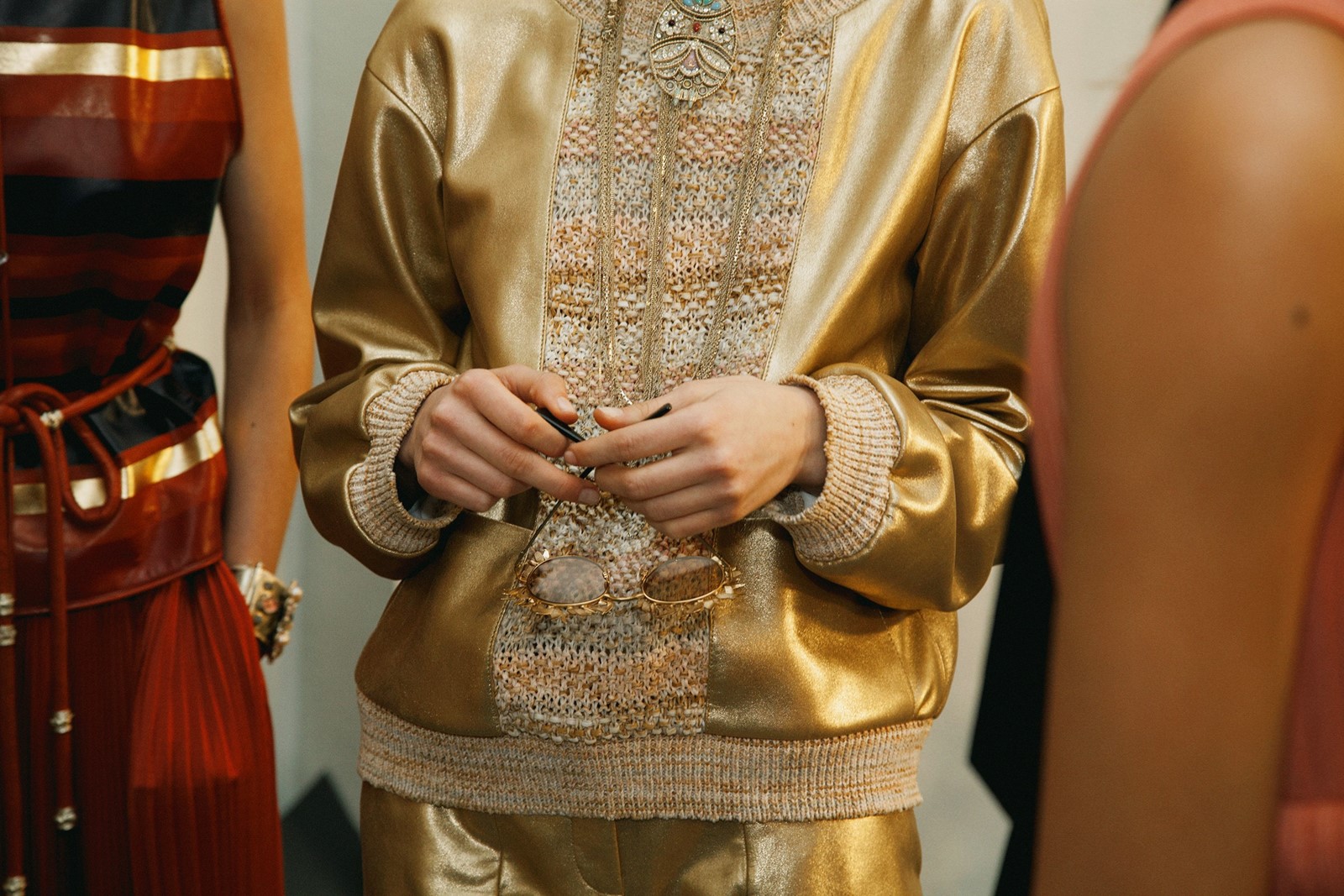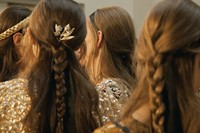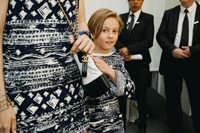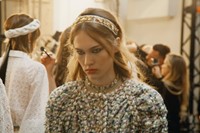“With the political situation in France I thought it was good to remind people that the Ancient Greeks invented democracy,” Karl Lagerfeld said following the showing of his Cruise collection in Paris, which took place the very evening of the final debate between presidential candidates Marine Le Pen and Emmanuel Macron and just five days before the election. Then, as is so often the case when he says something he believes may be either contentious or over-analytical: “I say that for fun, but it’s true.” Entitled The Modernity of Antiquity, this was a light and light-hearted collection, where the unparalleled talents of all involved – from the petites mains responsible for what looked like tweeds but were in fact embroideries made by Maison Lesage (“you can’t buy that anywhere else in the world”) or pale gold feathers applied to tapestry canvases on knife-pleat gladiator skirts (Lemarié) – were treated with a sense of playfulness that belied the workmanship that went into their creation.
Standing on the Shoulders of Giants
“If I have seen further, it is by standing on the shoulders of giants,” Isaac Newton said in 1676 – although the metaphor has been traced back to the 12th century and is originally attributed to Bernard of Chartres. On the Shoulders of Giants (subtitled The Great Works of Physics and Astronomy) is also the title of Stephen Hawkins’ edited compilation of scientific texts first published in 2002, and of Oasis’s fourth album, released two years prior to that.
“The body was not something that was hidden, that you had to be ashamed of like as it turned out to be in later centuries” – Karl Lagerfeld
It’s a viewpoint that seems especially relevant to fashion just now. Autumn/Winter collections as diverse as Dries Van Noten and Balenciaga and Dior and Gucci all looked at history – in some cases the houses’ own, in others more broadly – in order to move clothing forward. Leave it to M. Lagerfeld to take on the cradle of civilisation, however, and to do so with such grace and ease. “The body was not something that was hidden, that you had to be ashamed of like as it turned out to be in later centuries,” he continues. “The body was important, the culture more physical. The body went with the clothes. The clothes were easy, not contrived. That’s a modern message for me.”
That went some way towards explaining delicate silk mousseline dresses with a raised jewelled empire line that a young nymph might like to wear in a modern-day Forest of Delphi, roomy white robes printed with gold that spoke of an idyllic world and beautifully draped one-shouldered goddess gowns in white again, palest pink and blue. “Reality is of no interest to me,” M. Lagerfeld says and, again, this is very much central to his creative process. “I use what I like. My Greece is in my head.”
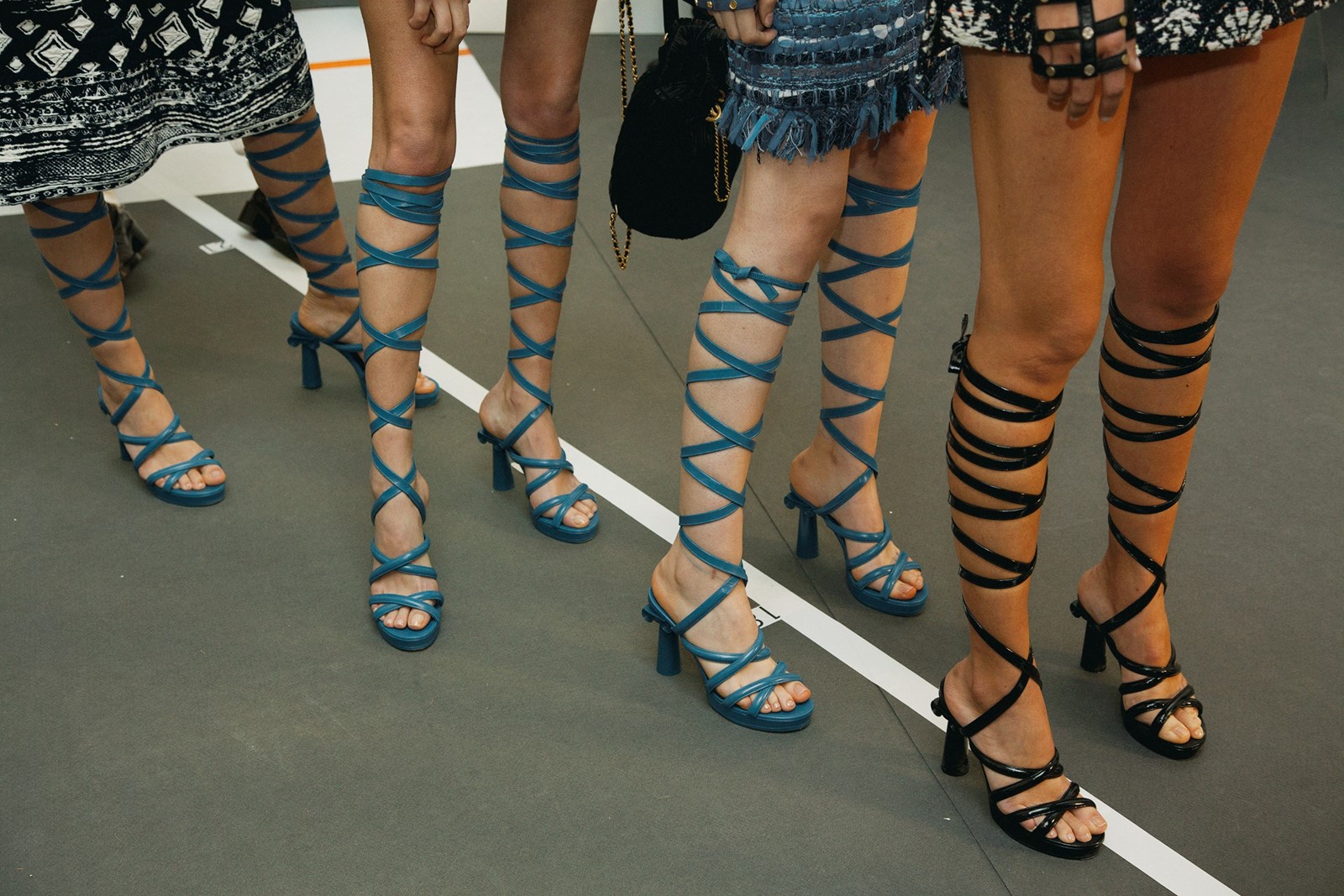
Inside the Head of Karl Lagerfeld
Don’t even try. Not only is this magical man’s manner of expressing himself studiously littered with apparent contradictions and red herrings, but also his ceaseless energy and curiosity have led to a knowledge of culture that is formidable. M. Lagerfeld is as happy talking about a gossip magazine as he is obscure German philosophy. Again, this is entirely deliberate. Despite the fact that the vast majority of us could learn an awful lot from him, he intensely dislikes the idea of playing professor and is anything but pompous. Like many a great giant, he carries his wisdom with wit.
“I don’t give lessons, I just propose looks” – Karl Lagerfeld
“It has to be fun. If it’s not fun it’s boring,” he explained, talking of amphora dresses, gladiator sandals in pop shades with ionic columns for heels and a genius soundtrack, courtesy of Michel Gaubert, featuring everything from Demis Roussous to Vangelis. “The clothes are important but you have to give them twists; you have to give the elements of Greek culture in a funny way, not in a heavy, teacher-like historical way. I don’t give lessons, I just propose looks.”
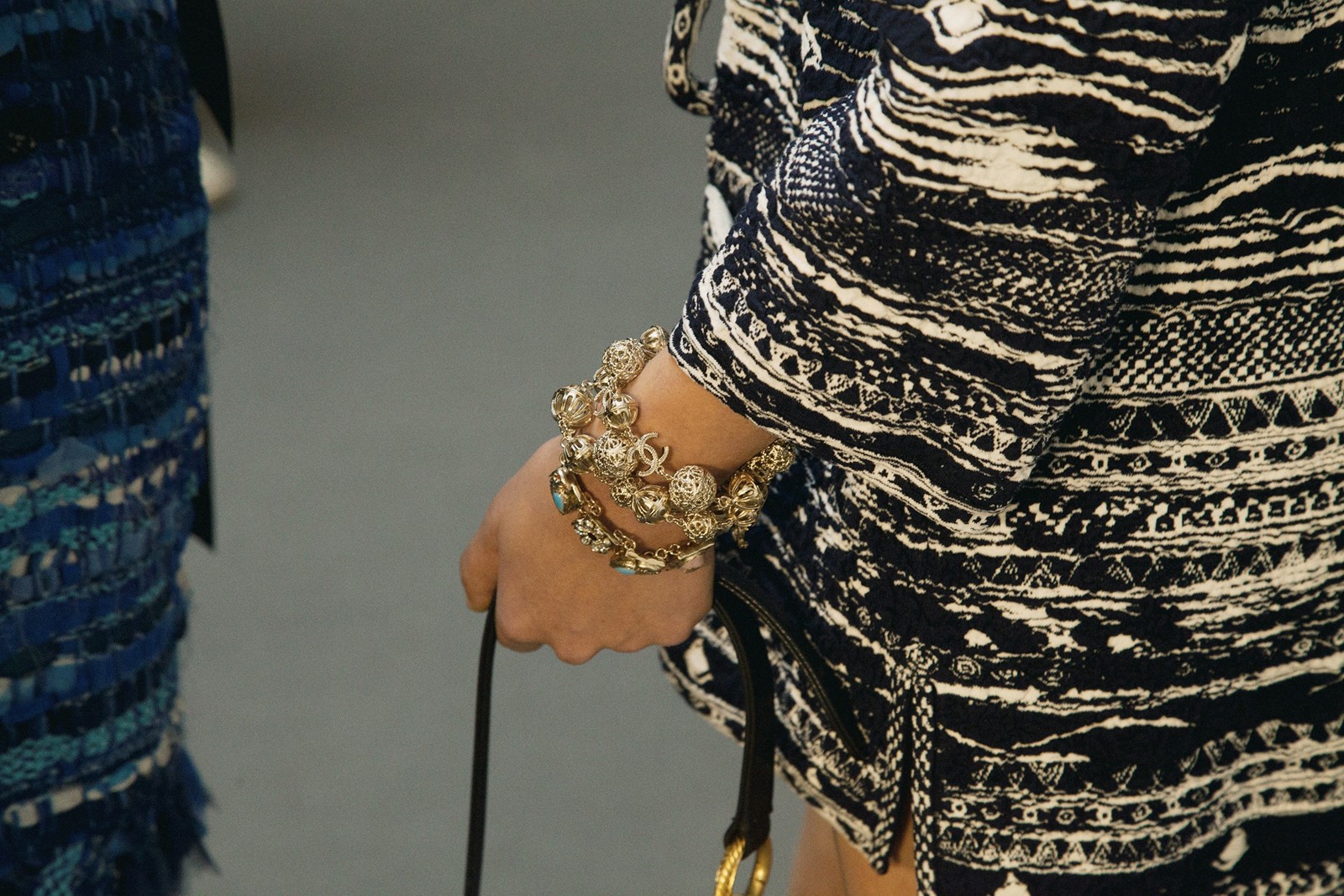
Future Perfect
As always, while Karl Lagerfeld has created the empire that is Chanel today, much of that world has its roots, symbolically at least, in the universe of its eponymous founder. And so the invitation featured a marble statue of Venus that Gabrielle Chanel owned, and which took pride of place in her Paris apartment. In 1922, she designed the costumes for Jean Cocteau’s Antigone. He asked her, he said, not only because she was “the greatest couturière of her time,” but also he, not unreasonably, “couldn’t imagine Oedipus’s daughters would be badly dressed”. “For me it was important to make something that is still Chanel but at the same time to take inspiration from another world and from other centuries. I think that is important too. But it still looks like Chanel even if Chanel never did it that way,” Karl Lagerfeld says for his part.
“I’m suggesting going back to move forward. To create the future, you have to pay attention to the past” – Karl Lagerfeld
He himself fell upon Ancient Greece, specifically the story of The Trojan War, aged seven, according to the powers that be at Chanel. “I’m expressing through fashion a fascination I’ve had since childhood,” he confirms. “The criteria of beauty in ancient, then classical, Greece still holds true. There have never been more beautiful representations of women. Or more beautiful columns. The entire Renaissance, in fact, was based on Antiquity. It is really about the youth of the world in all its power and unpredictability – just like the unforgiving gods. I’m suggesting going back to move forward. To create the future, you have to pay attention to the past.”
